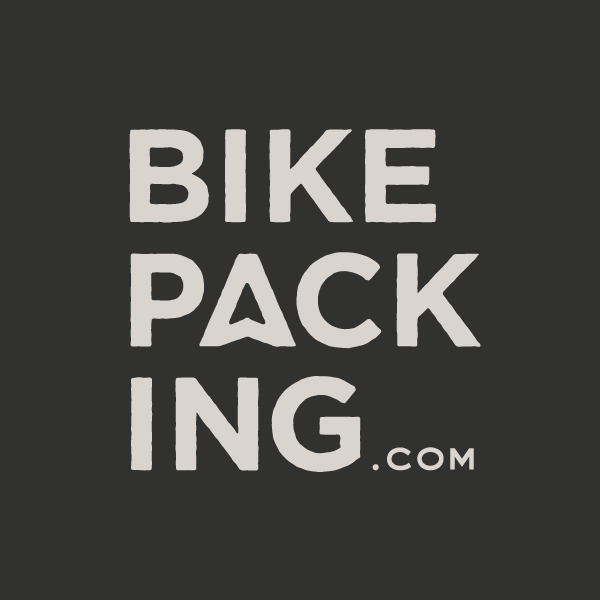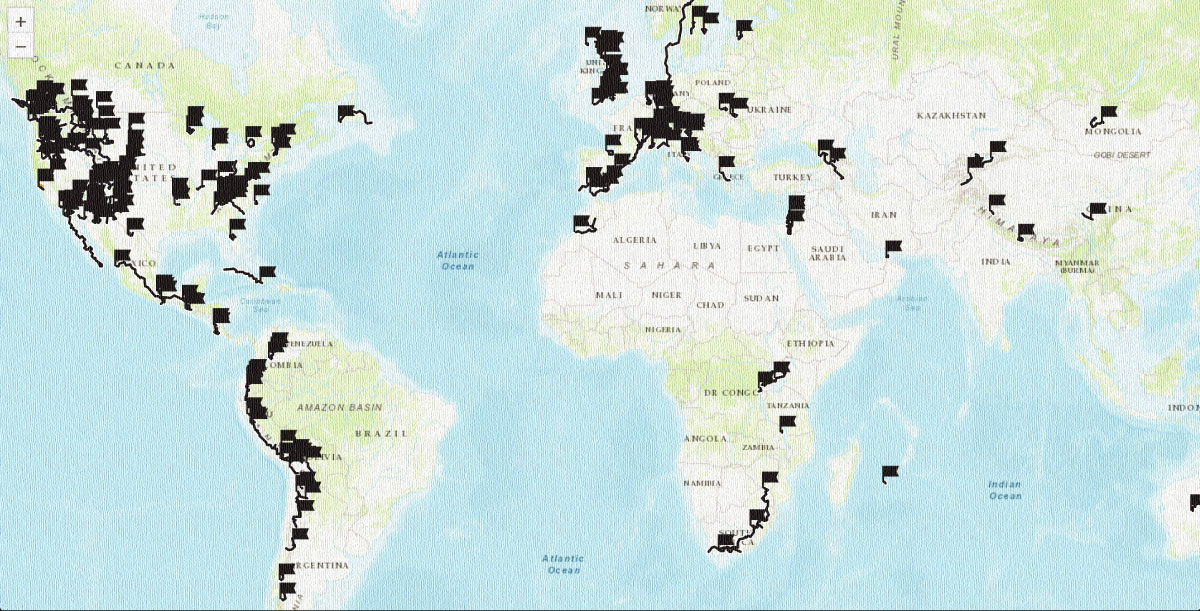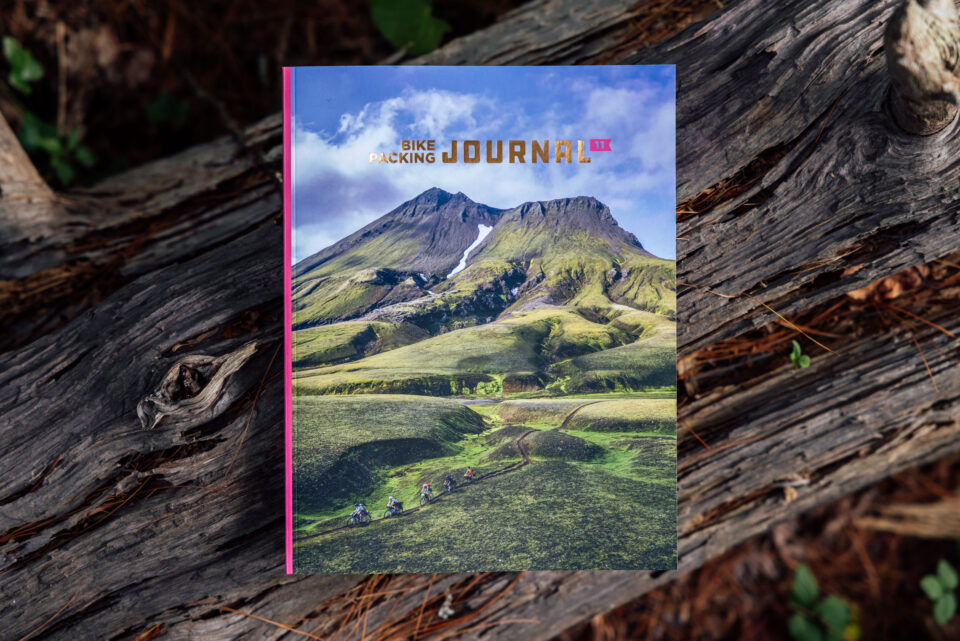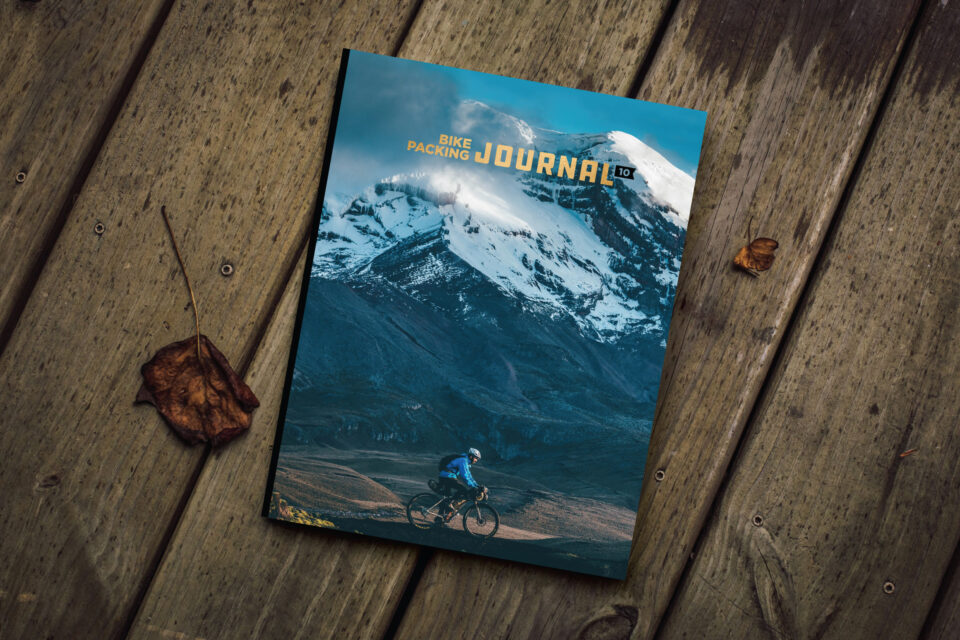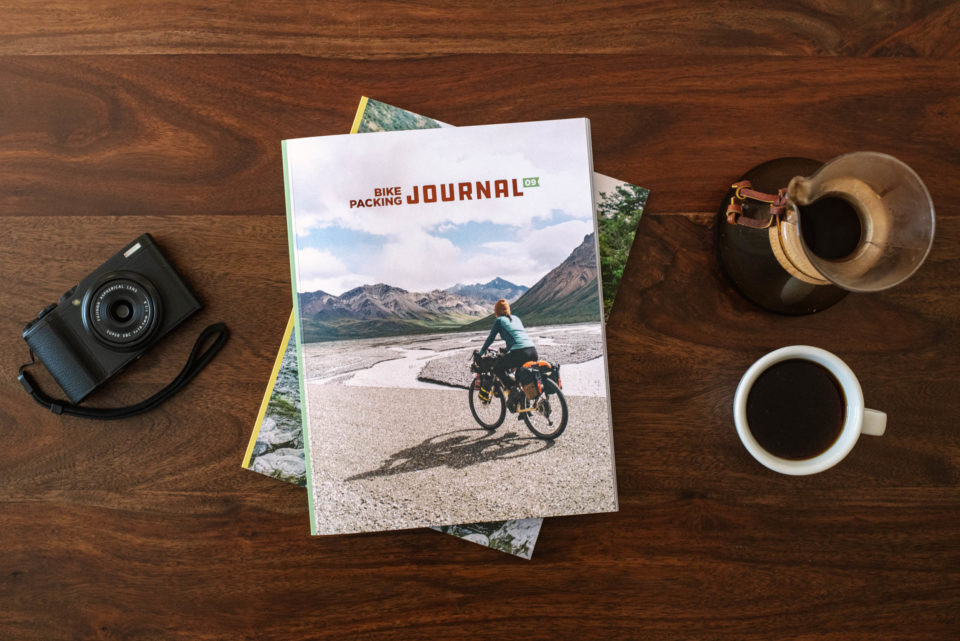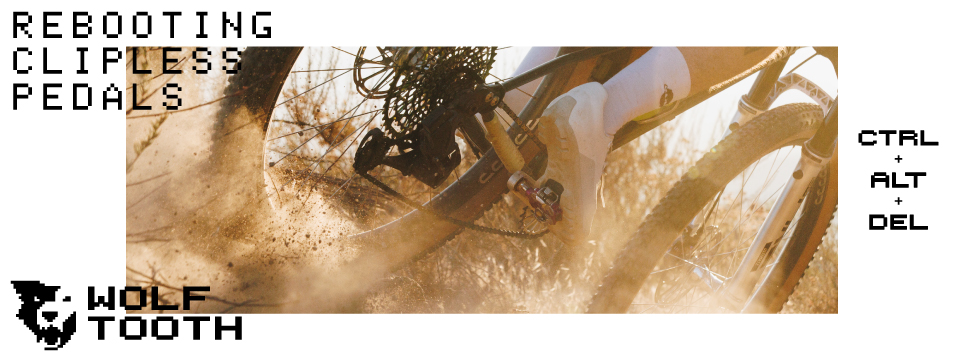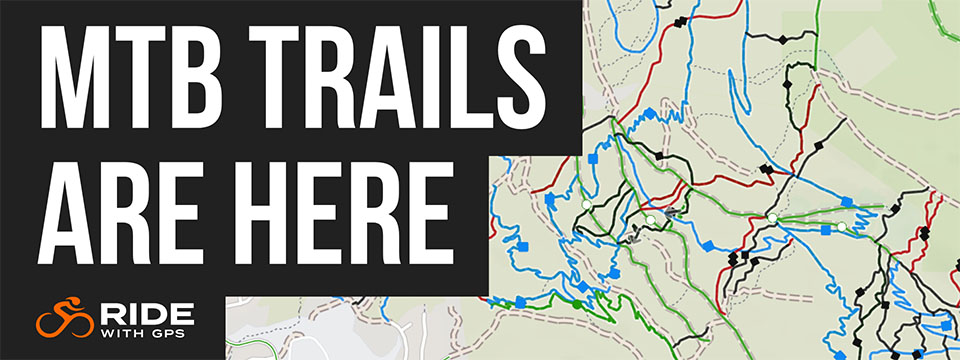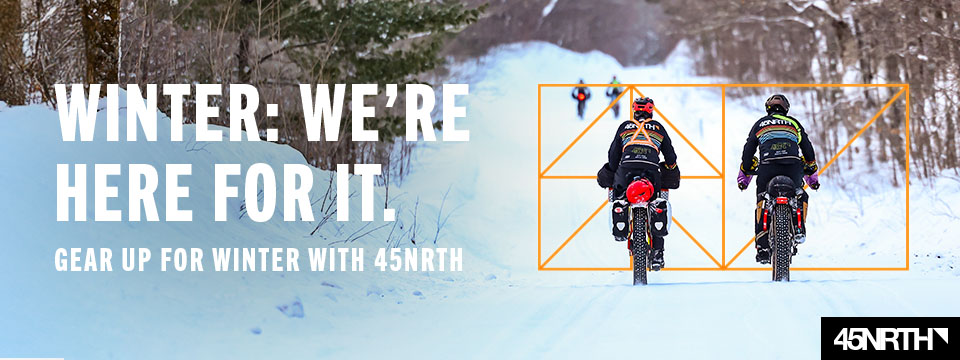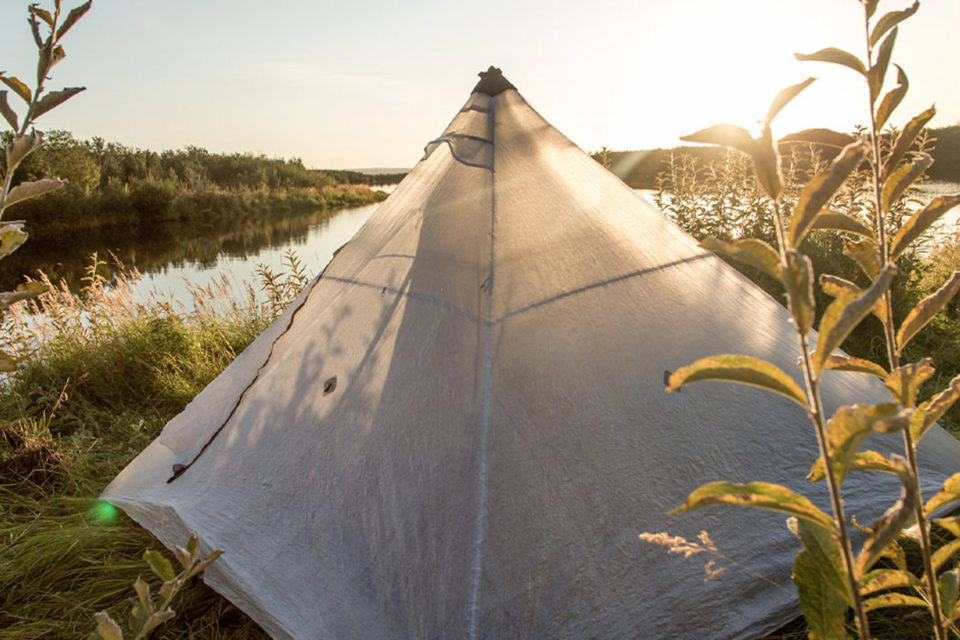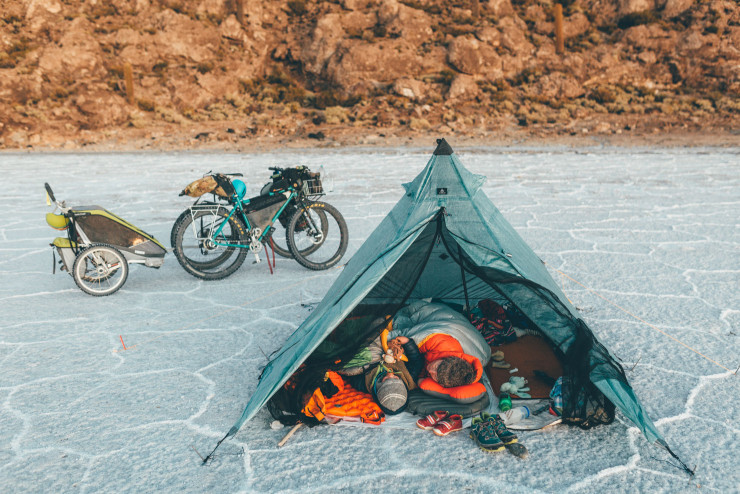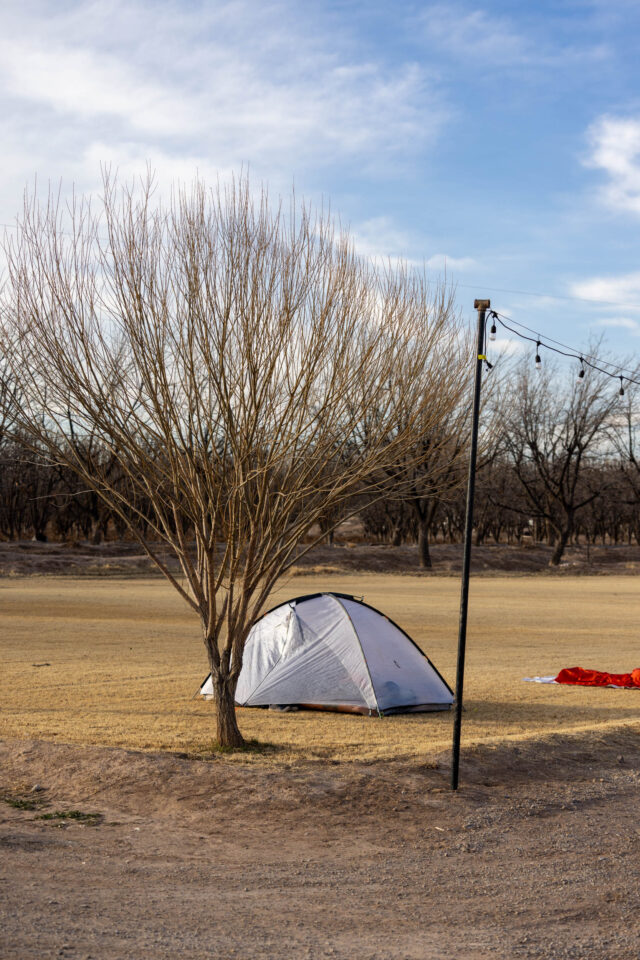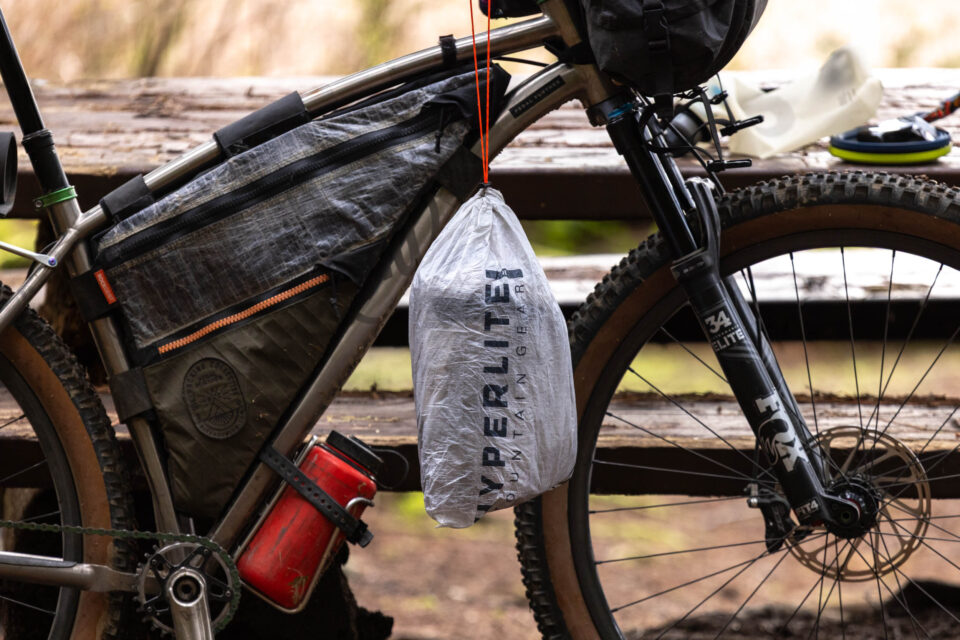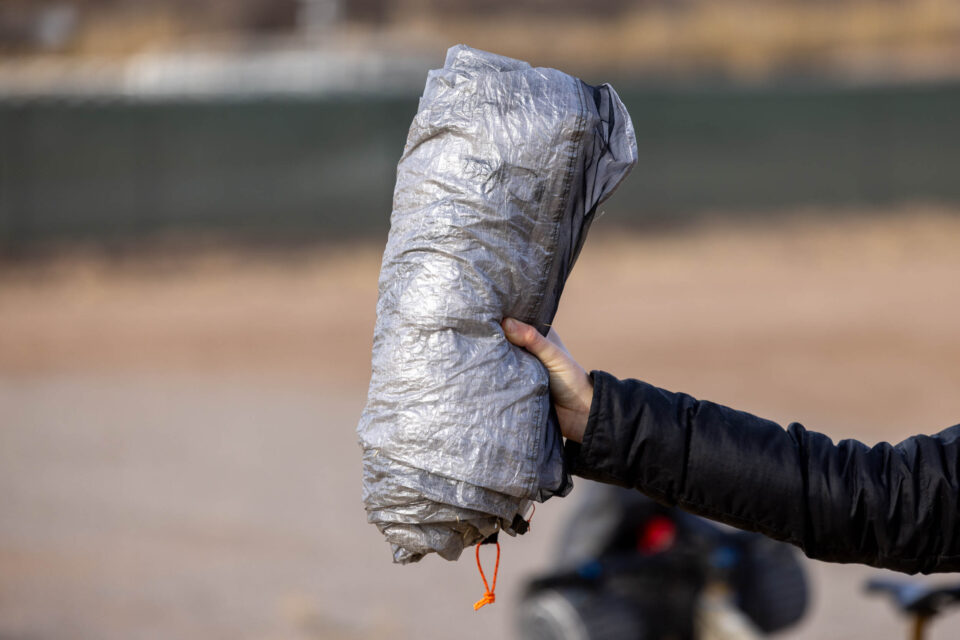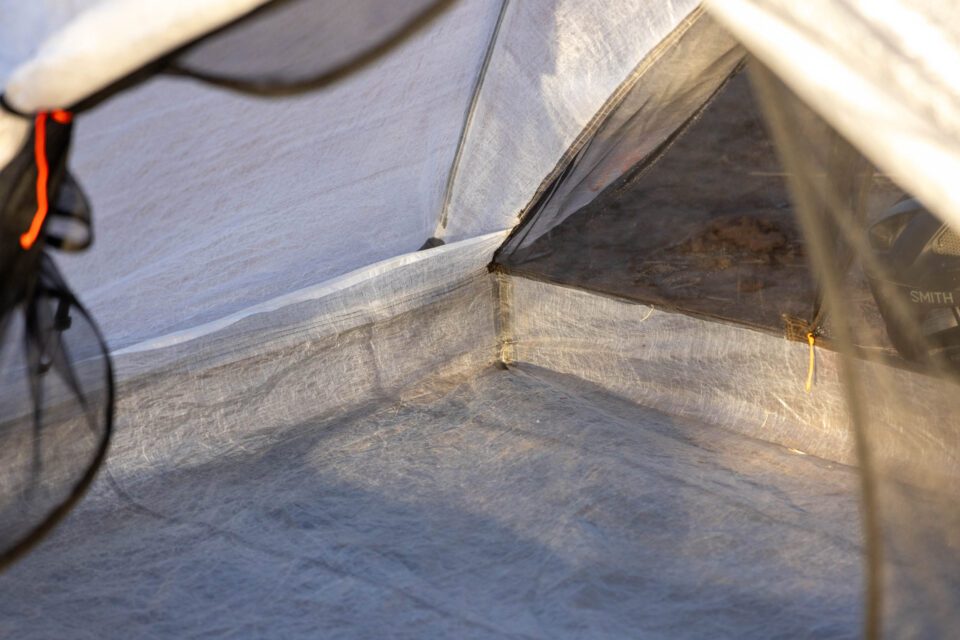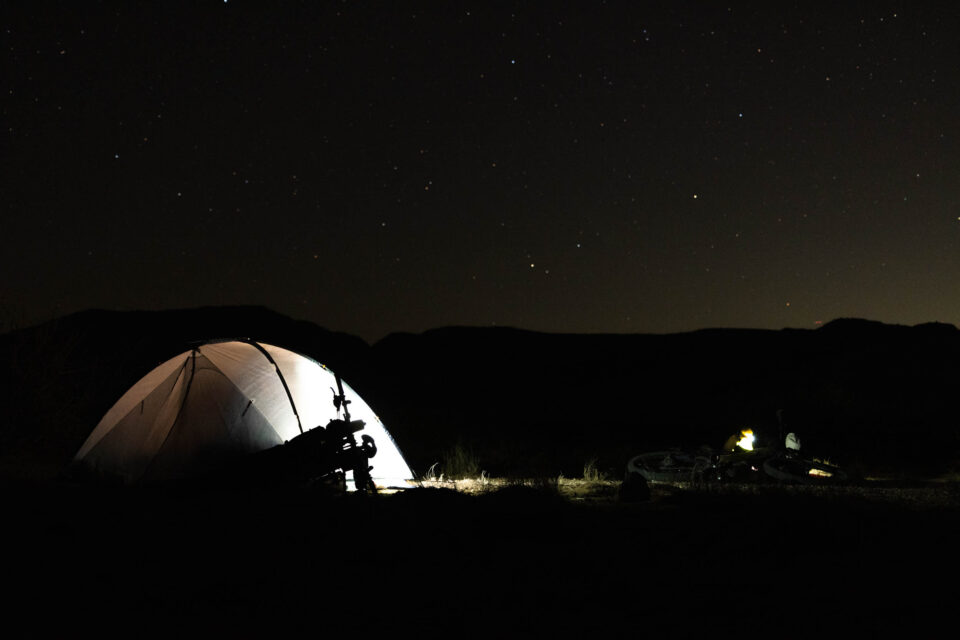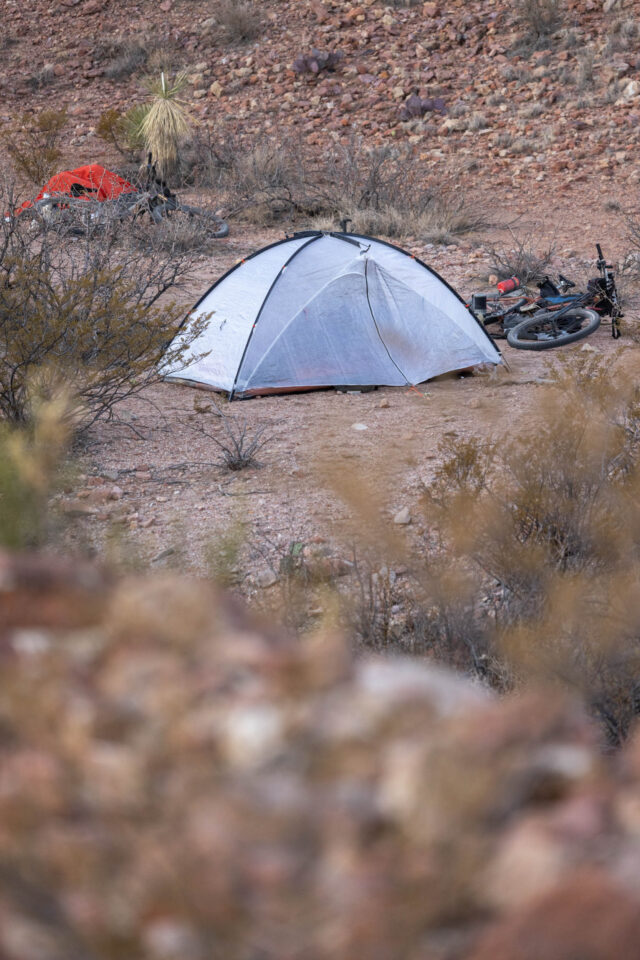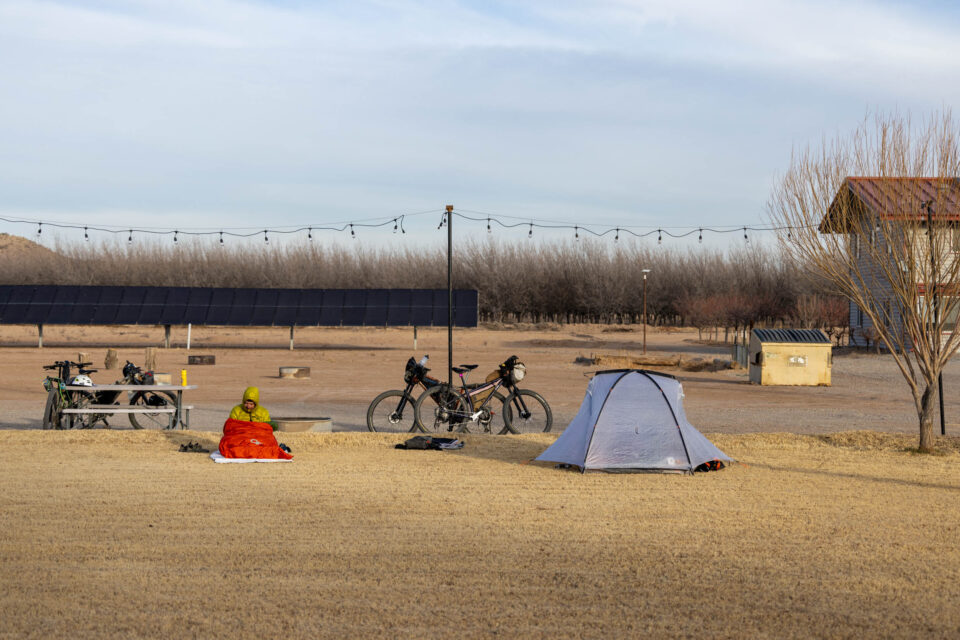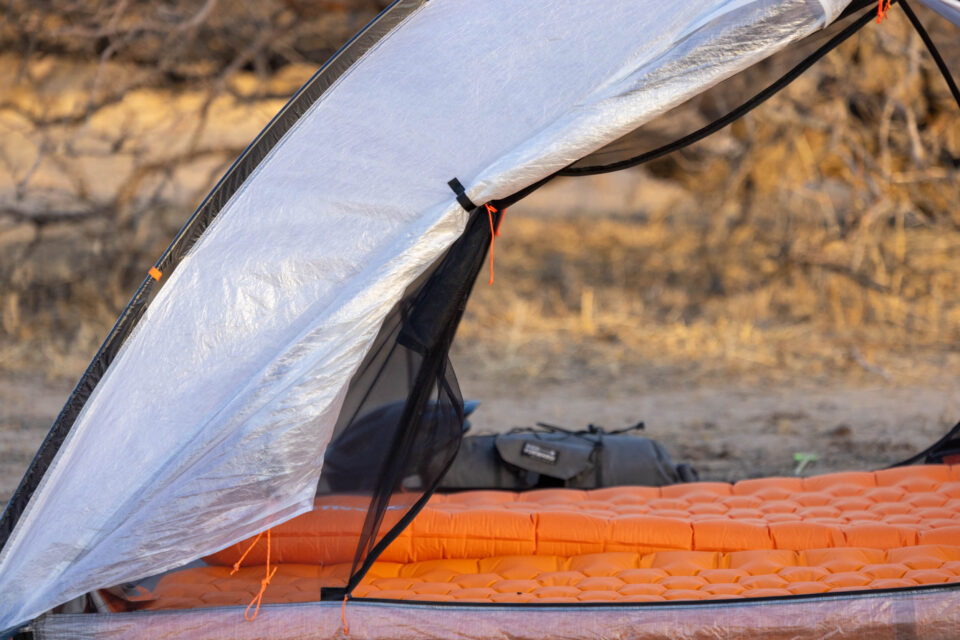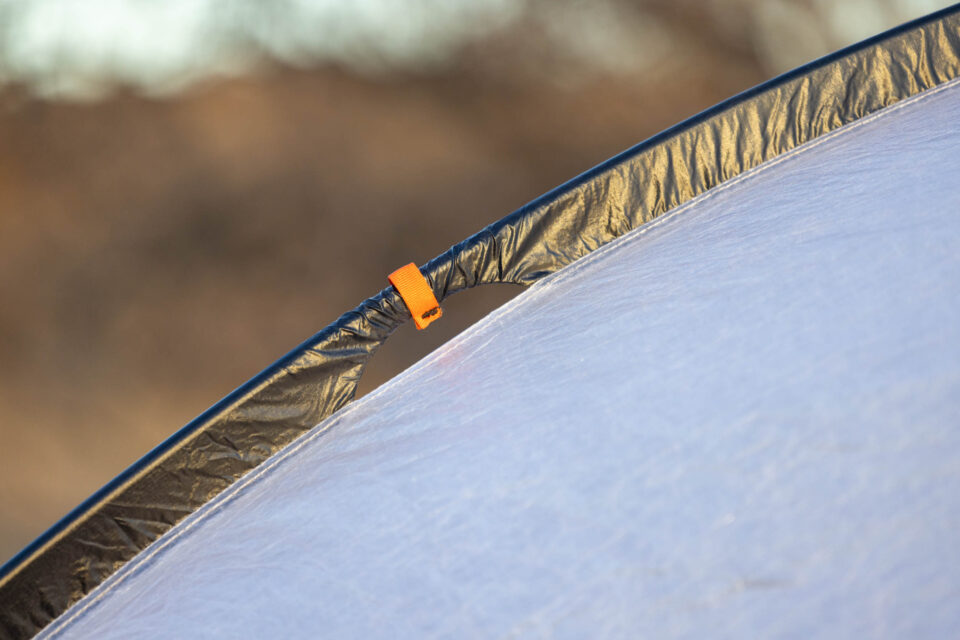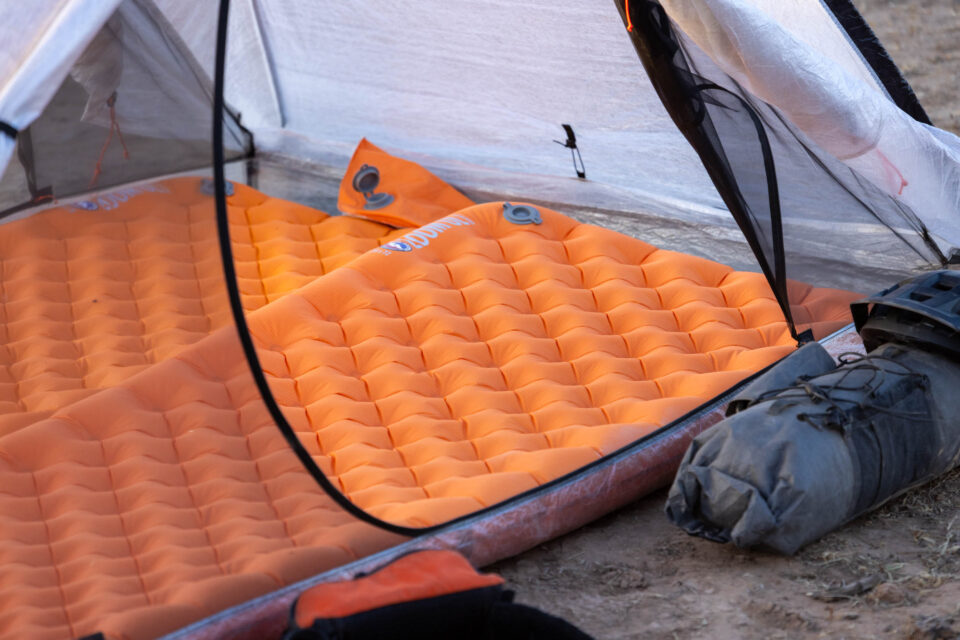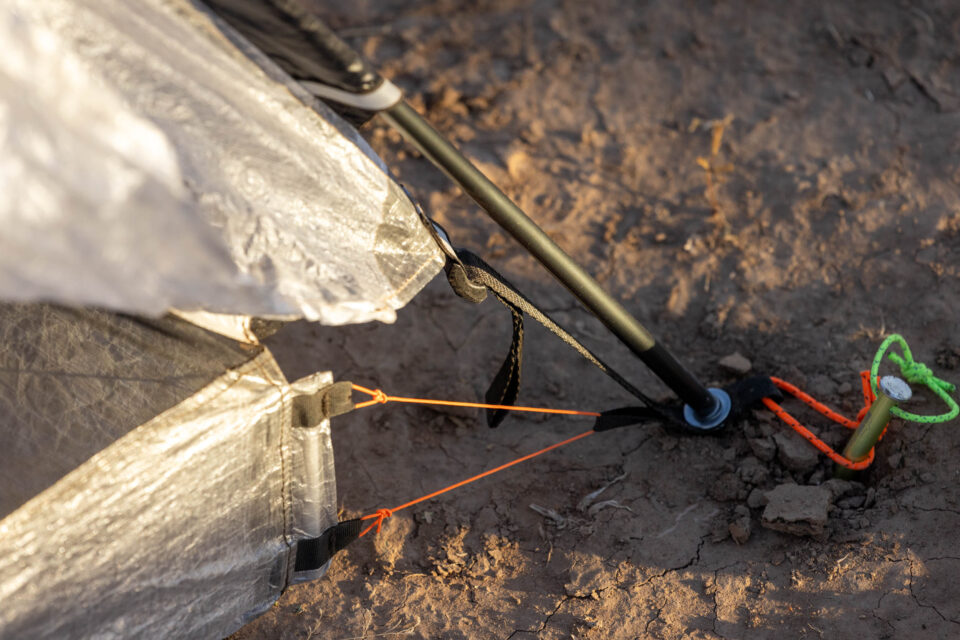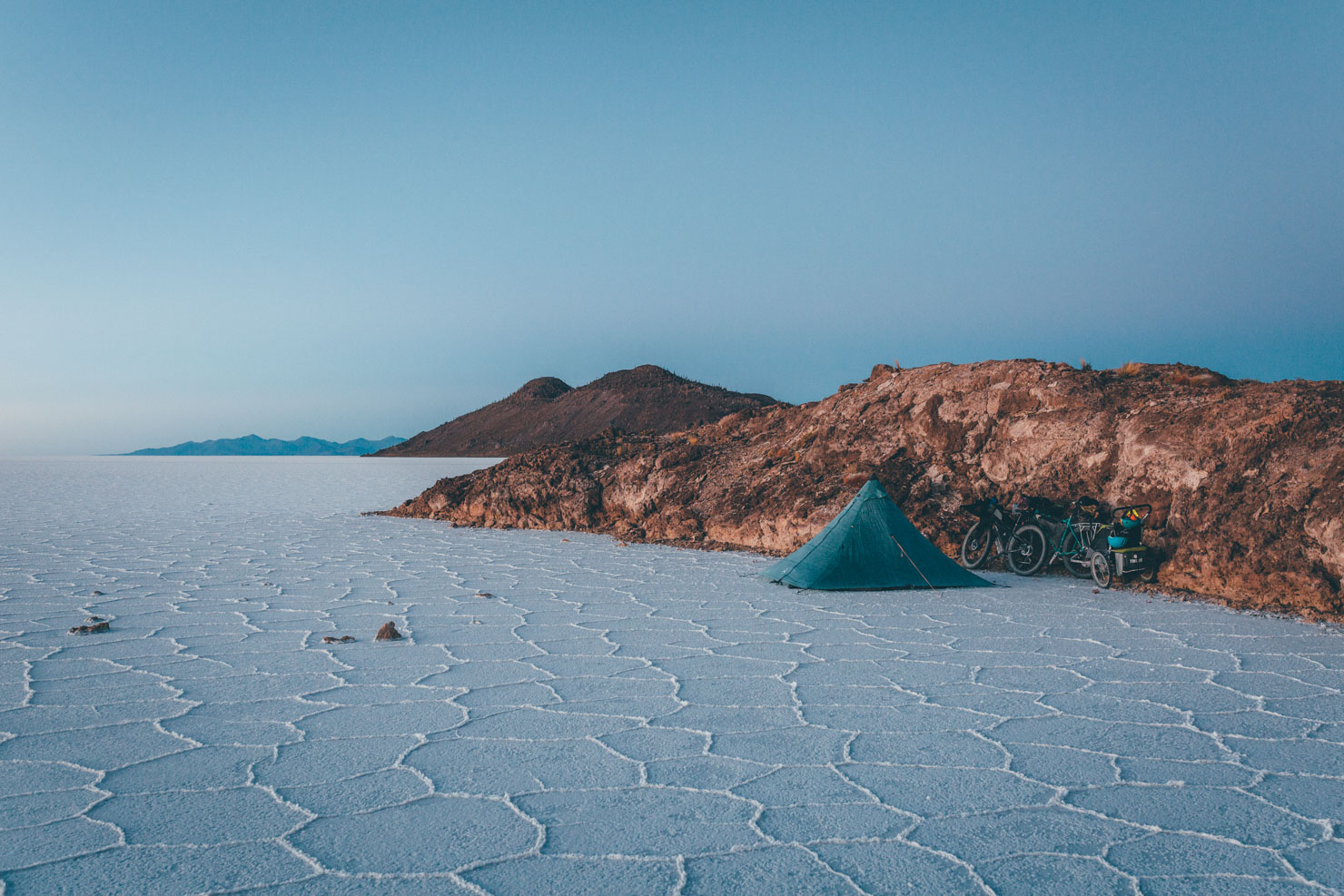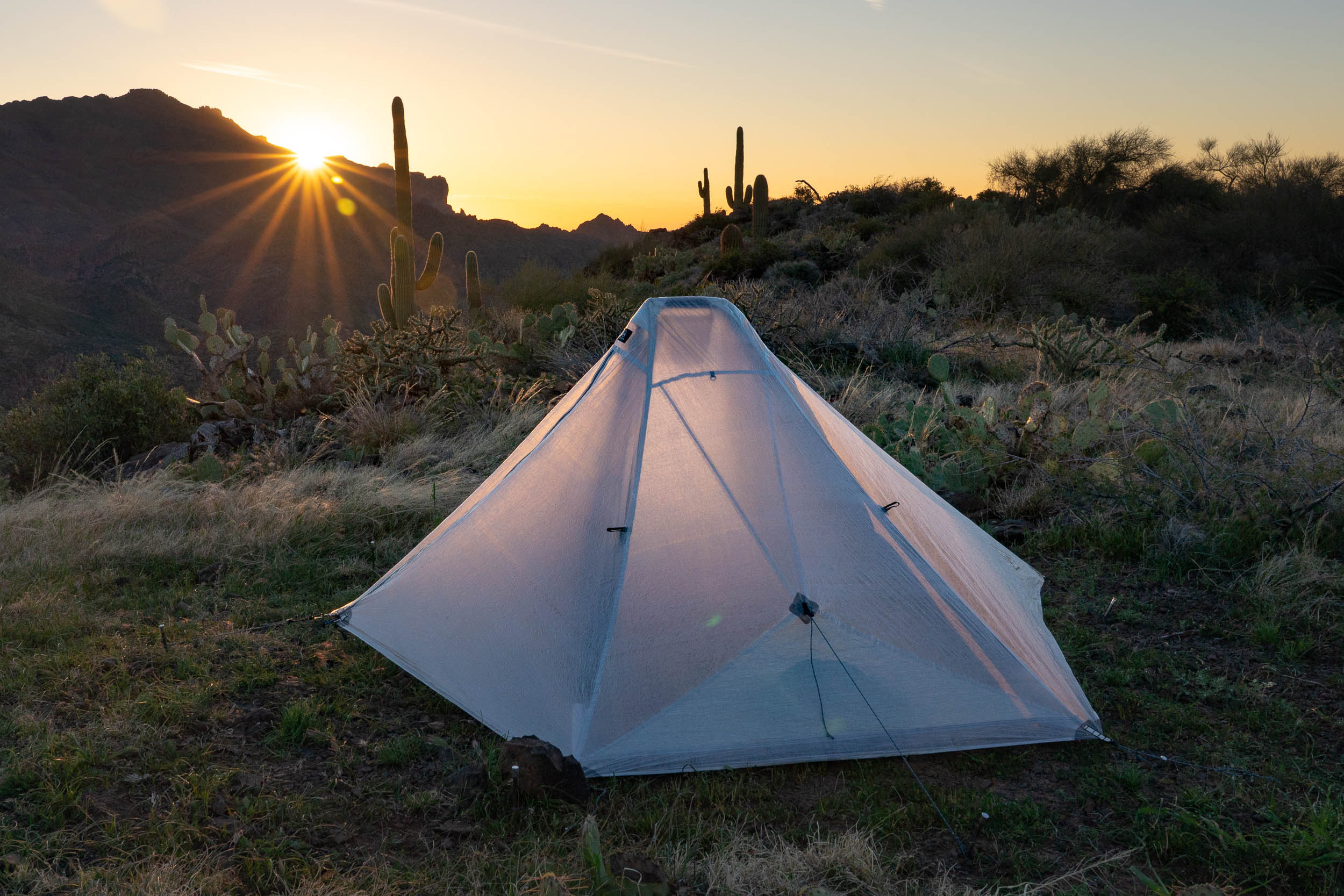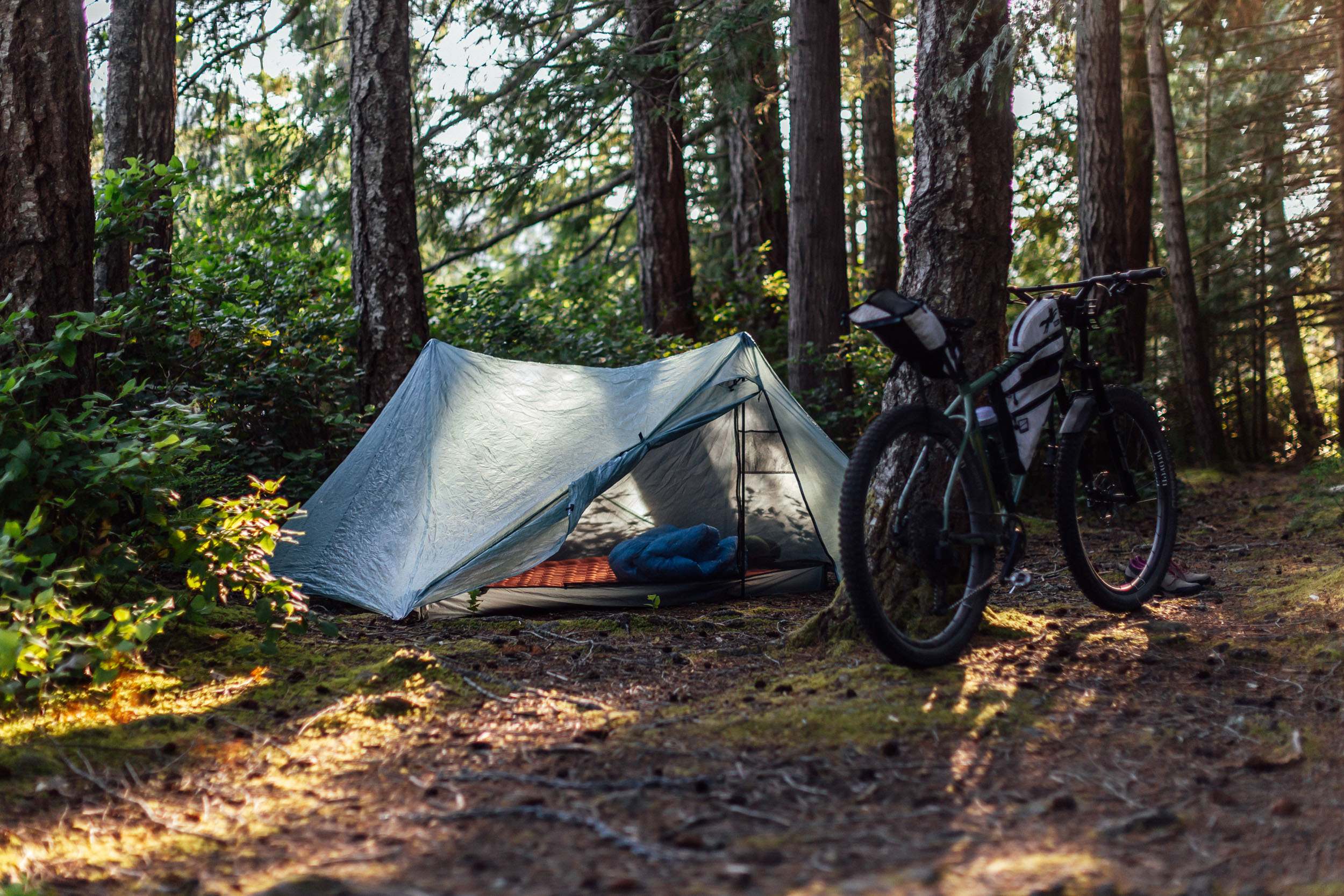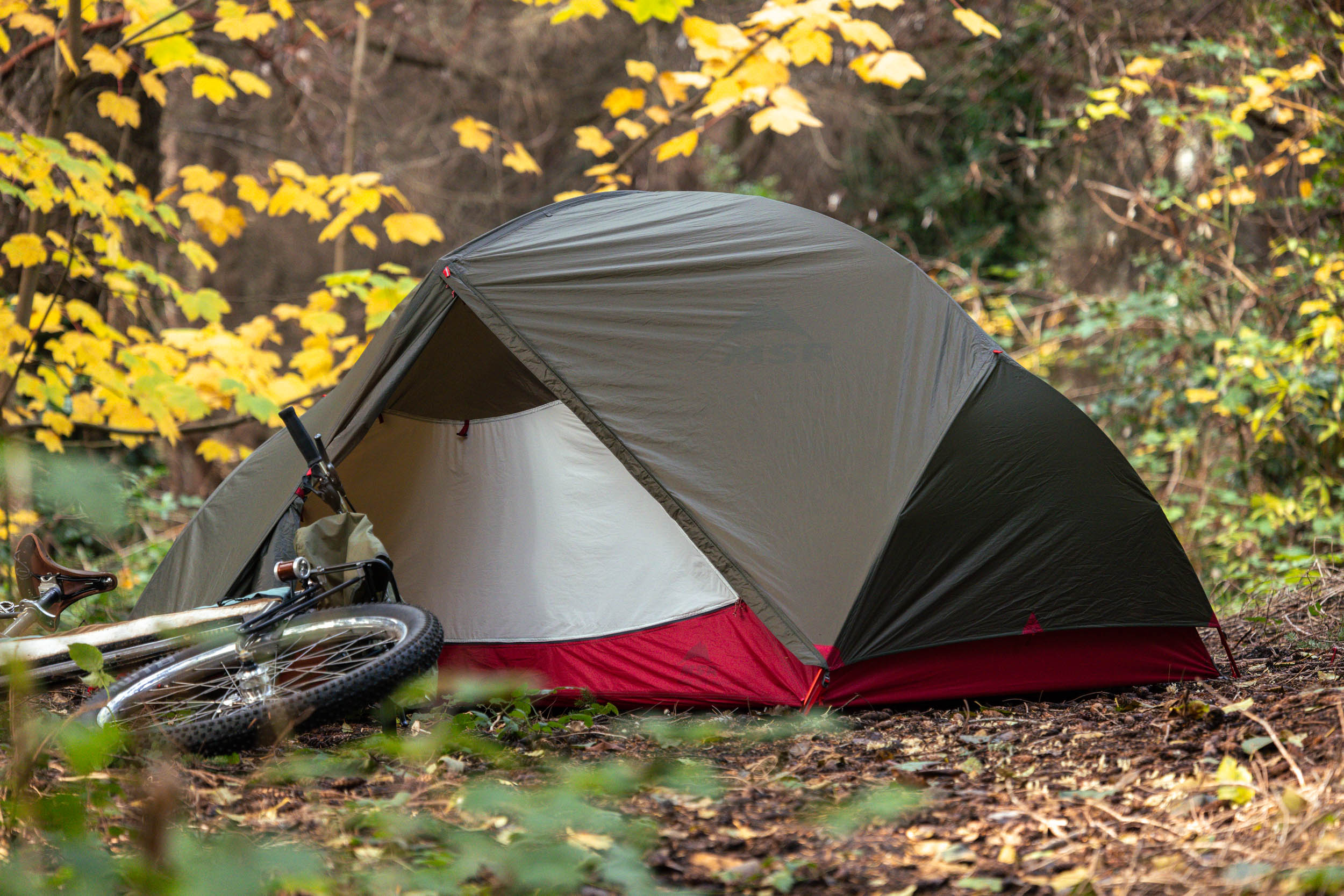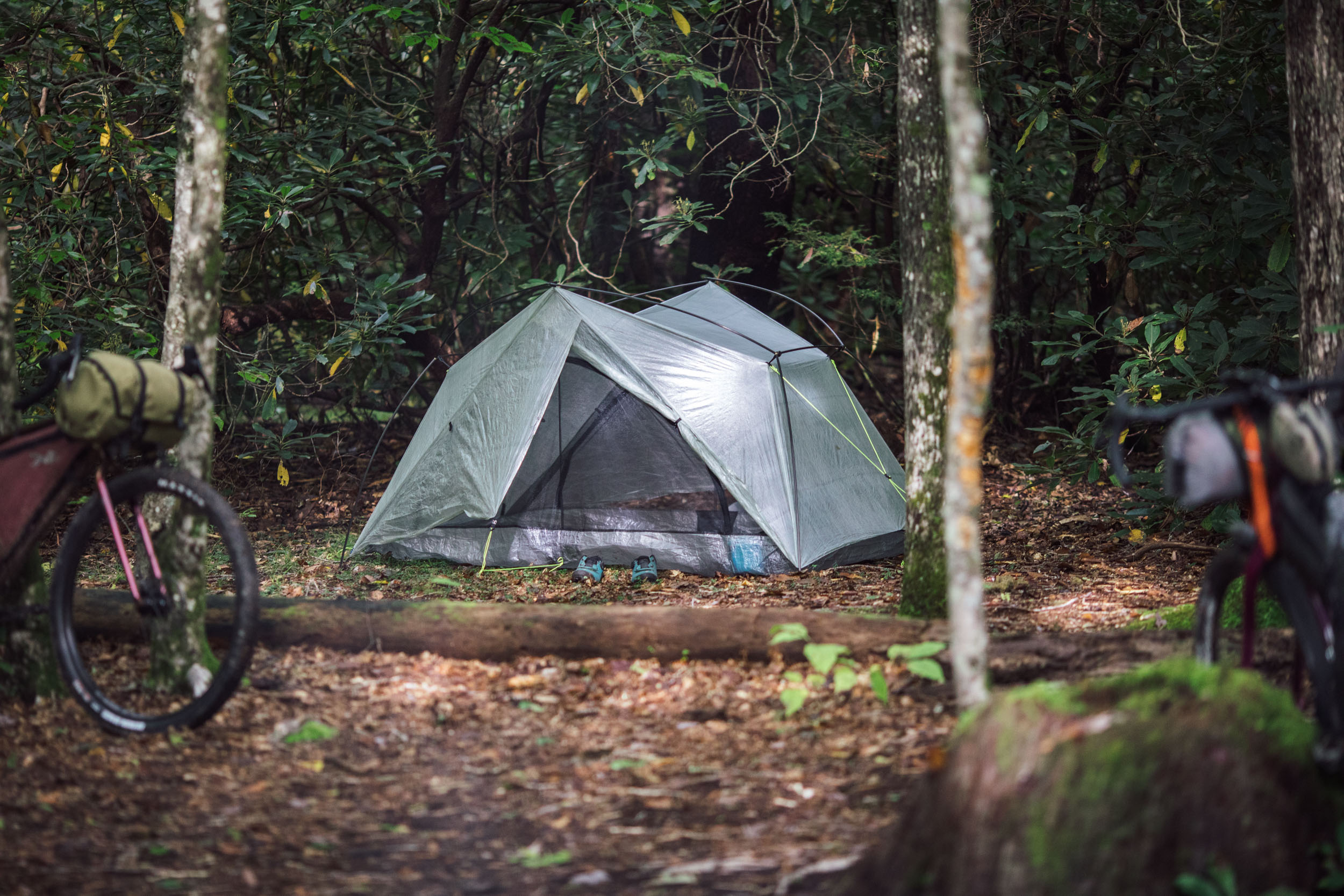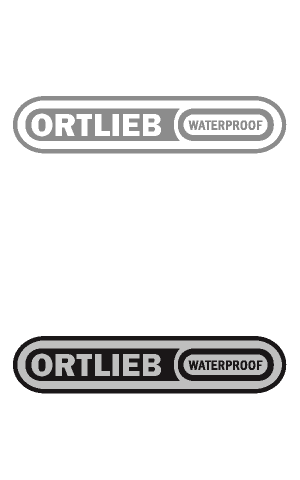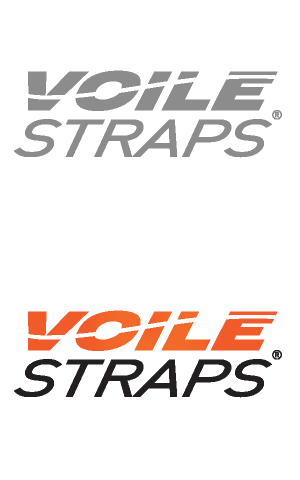Hyperlite CrossPeak 2 Tent Review: A Freestanding First
Released today, the new Hyperlite CrossPeak 2 Tent marks an exciting new chapter in the brand’s nearly two-decade run of designing some of the lightest tents in the game. Miles has been testing Hyperlite’s first freestanding tent in New Mexico and British Columbia over the last few months. Find his Hyperlite CrossPeak 2 Tent review here…
PUBLISHED Apr 22, 2025
I’m incredibly picky about camping equipment, and after several hundred bikepacking campouts over the last decade, I’m confident about what works and what doesn’t for me. Thankfully, over the last few years, there has been a surge of awesome brands designing great lightweight gear, and many are considering the unique needs of bikepackers. Nowadays, it’s easy to find awesome lightweight sleeping bags, tiny packable stoves are everywhere, and tents with bikepacking-specific features like shorter pole segments and interesting vestibule features are becoming increasingly common. We’re also seeing brands branch out from their regular releases to offer something new, a sign that the industry is evolving.
Hyperlite Mountain Gear is a good example of an evolving outdoor gear brand, even if it has been a slow burn. Mike St. Pierre founded Hyperlite in 2010 because he was dissatisfied with the outdoor gear in big box stores and wanted to reduce his overall gear weight for backpacking trips. He immersed himself in the world of technical fabrics and discovered Dyneema Composite Fabrics (DCF), which was called Cuben Fiber at the time. Mike was impressed by Dyneema’s strength and tear resistance, 100% waterproofness, and the fact that, unlike nylons or silnylons, it doesn’t stretch or sag in wet weather.
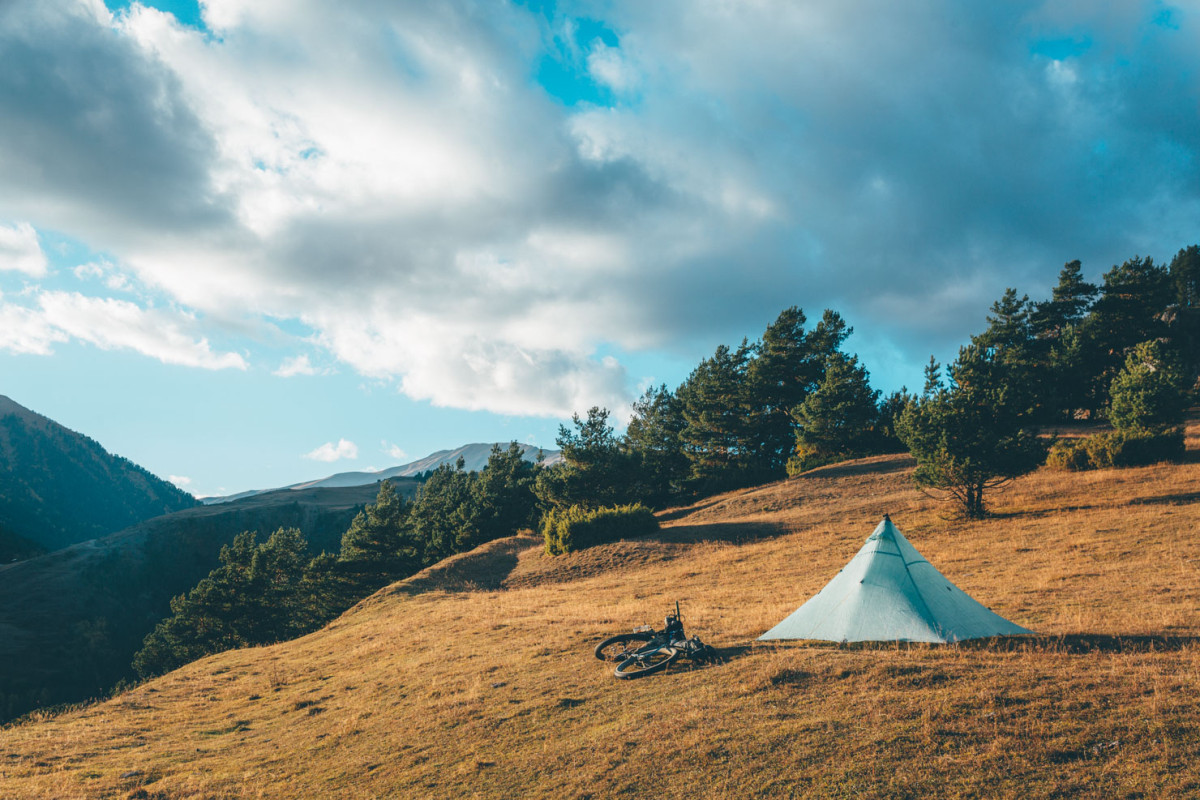
The brand’s flagship products were lightweight backpacks. In 2013, they started offering lightweight shelters and released the popular UltaMid 2. A few years later, they entered the sleeping bag and quilt market. Until this point, most of their gear was made in the US, but in 2020, Hyperlite expanded its production capabilities by partnering with a skilled facility in Mexico. Every backpack, shelter, and most accessories Hyperlite offers are still made with Dyneema Composite Fabrics. In some ways, the Hyperlite brand is synonymous with Dyneema fabrics.
Although we’ve reviewed and shared a lot from Hyperlite over the years, I’ve had limited experience with their shelters because nine times out of ten, I prefer a freestanding shelter over a non-freestanding trekking pole shelter. However, Cass has always spoken highly of Hyperlite’s Ultamid tents, and they earned spots in our 2016 and 2021 Gear of the Year Awards roundup. In my eyes, they’ve always had a reputation for creating high-quality gear. So, when Hyperlite reached out to me last summer asking if I’d be willing to test a pre-production sample of their first freestanding tent, I jumped on the opportunity. Eight months later, including several overnighters, a week-long trip on the Monumental Loop, and one tent swap to an updated version, Hyperlite is finally ready to announce the CrossPeak 2.
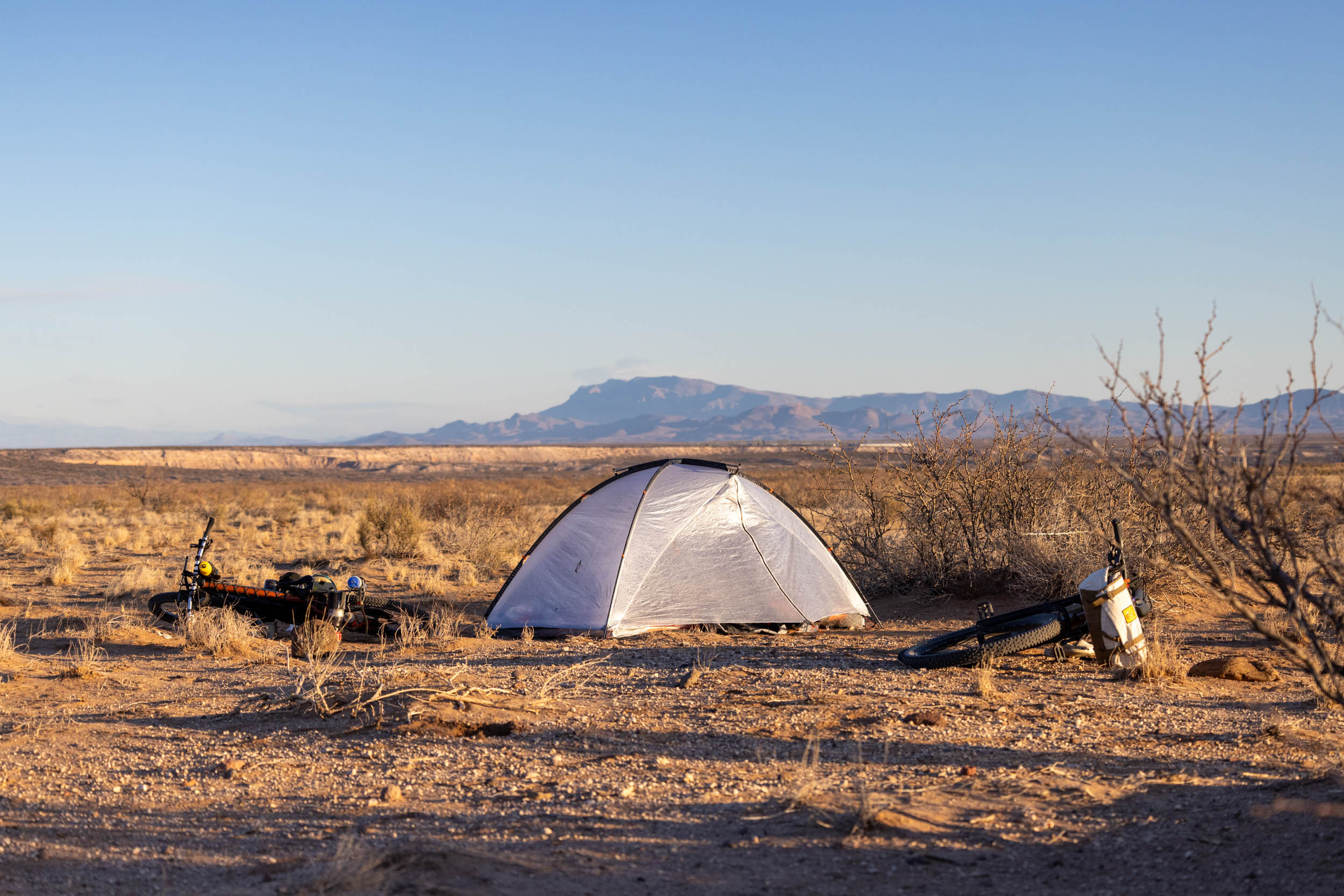
Hyperlite CrossPeak 2 At a Glance
After over a decade of designing trekking-pole-style shelters, the Hyperlite CrossPeak 2 marks an exciting new chapter for the Dyneema-centric brand. The CrossPeak 2 is a two-person, three-season freestanding tent. It uses a simple X-pole construction with a small horizontal canopy pole to increase the usable internal space. It is primarily made from 100% waterproof Dyneema Composite fabrics, with a lighter DCF5 fabric for the fly, a durable DCF10 for the bathtub floor, and mesh doorways and vents.
In true Hyperlite fashion, it uses a single-wall construction with exterior pole sleeves instead of a removable fly or exterior clips. The sleeves are made from a 20-denier silnylon fabric for better strength and puncture resistance over silpoly. Hyperlite says sleeves were used to provide a more uniform and equally tensioned setup. The three aluminum DAC Featherlite NFL poles have an 8.7mm diameter and are purposefully cut to lengths that Hyperlite says works well for backpacks and bikepacking bags. They strategically chose aluminum poles over carbon for their repairability and durability at a negligible weight penalty.
The CrossPeak 2 has two doorways and vestibules, two peak vents at each doorway, additional ventilation built into the head and foot of the tent, and two small mesh pockets inside for each user. There are additional exterior guyline points to use in rough weather, the entire tent is seam-taped for a fully waterproof construction, and the bathtub floor has a slight taper from head to foot to reduce weight. Here’s an overview video Hyperlite put together for today’s launch.
CrossPeak 2 versus The Rest
The CrossPeak 2 has an impressive lineup of specs that make it practical for bikepacking. Aside from the freestanding design, which excels on awkward terrain and tight campsites, it weighs less than most comparable lightweight freestanding tents we’ve tested and doesn’t skimp on features or interior space. Despite this, it’s also unique as there aren’t many Dyneema freestanding tents with exterior pole sleeves out there. The only other production tent I could find with a comparable design is the Samaya 2.0, which weighs around 370 grams more, offers less interior living space, and doesn’t have built-in vestibules.
The CrossPeak 2 weighs just 935.5 grams (2.1 pounds), has a 42″ internal head height, and is 88″ long inside, making it suitable for folks well over six feet tall. It tapers from 48″ wide at the head to 45″ at the feet, making it suitable for two standard-width sleeping pads or our beloved Big Agnes Rapide SL double-wide sleeping pad. Zpacks’ Free Zip 2P tent and Duplex + Flex Kit are some of the only freestanding tents that weigh less, but they use external pole clips instead of sleeves.
Ultralight Freestanding Two-Person Tents Compared
| Product | Complete Weight | Head Height | Length x Width | Price |
|---|---|---|---|---|
| Hyperlite CrossPeak 2 |
2.1 lbs
935.5 g
|
42″
106cm
|
88×48/45″
223 x 122/114cm
|
$950 |
| Samaya 2.0 Dyneema |
2.8 lbs
1,305 g
|
39″
100cm
|
86×43″
220 x 110cm
|
$1,000 |
| SlingFin Portal 2 |
2.8 lbs
1300 g
|
44″
111cm
|
85 x 51/42”
216 x 129/107cm
|
$560 |
| Zpacks Free Zip 2P |
1.9 lbs
896 g
|
43″
109cm
|
86 x 44”
218 x 112cm
|
$899 |
| Zpacks Duplex + Flex Kit |
1.8 lbs
830 g
|
48″
122cm
|
90 x 45”
230 x 114cm
|
$850 |
| Tarp Tent ArcDome 2 Ultra |
3.3 lbs
1,508 g
|
45″
114cm
|
92 x 50”
234 x 127cm
|
$659 |
| Big Agnes Copper Spur 2 Platinum |
2.6 lbs
1,190 g
|
40″
102cm
|
90 x 52/42”
229 x 132/107cm
|
$600 |
| Big Sky International Mirage 2P |
2.4 lbs
1,132 g
|
42″
107cm
|
91 x 53/47”
230 x 135/119cm
|
$350 |
| Durston X-Dome 2+ |
2.7 lbs
1,250 g
|
TBD
TBD
|
TBD
TBD
|
$??? |

There’s no question that Dyneema tents can weigh less than nylon or polyester tents, but looking at the comparison chart above, we can also see that they’re inherently more expensive. It’s not uncommon to find ultralight silnylon tents for under $400. Big Sky International’s offerings are a great example of this, while Dyneema tents are regularly priced above $800. And despite weighing less, Dyneema Composite fabrics last longer if they are rolled (not stuffed) when packed to avoid creases, which means some extra care is required to achieve a small pack size. After testing dozens of tents made from different materials, I can confirm that Dyneema tents don’t pack as small as the others.
Hyperlite claims the CrossPeak 2 weighs 935.5 grams (2.1 pounds), but my pre-production sample weighed in slightly heavier at 996 grams (2.2 pounds). For reference, the poles and included Dyneema stuff sack weigh 371 grams, and the tent and Dyneema stuff sack weigh 625 grams. You can expect to add 10-20 grams per stake; I used a stake in each corner and two more for the tent doors.
Set up, Take Down, and Packing
The first prototype I tested was used on several overnighters last fall. It looks almost identical to the pre-production version Hyperlite swapped it out with this winter ahead of a week of bikepacking in New Mexico. The biggest change was the orange guyline loops that are sewn into the pole sleeves on the outside of the tent. The first version I tested had long loops that had a tendency to get caught on the pole when sliding them through the sleeves, but the production version has smaller loops that no longer get in the way.
It’s been a while since I’ve used a tent with exterior pole sleeves rather than clips, and my first few attempts to set it up brought me back to car camping with my family as a kid. While sleeves aren’t quite as simple as a clip system, it doesn’t take long to figure out what works and what doesn’t for set up and take down.
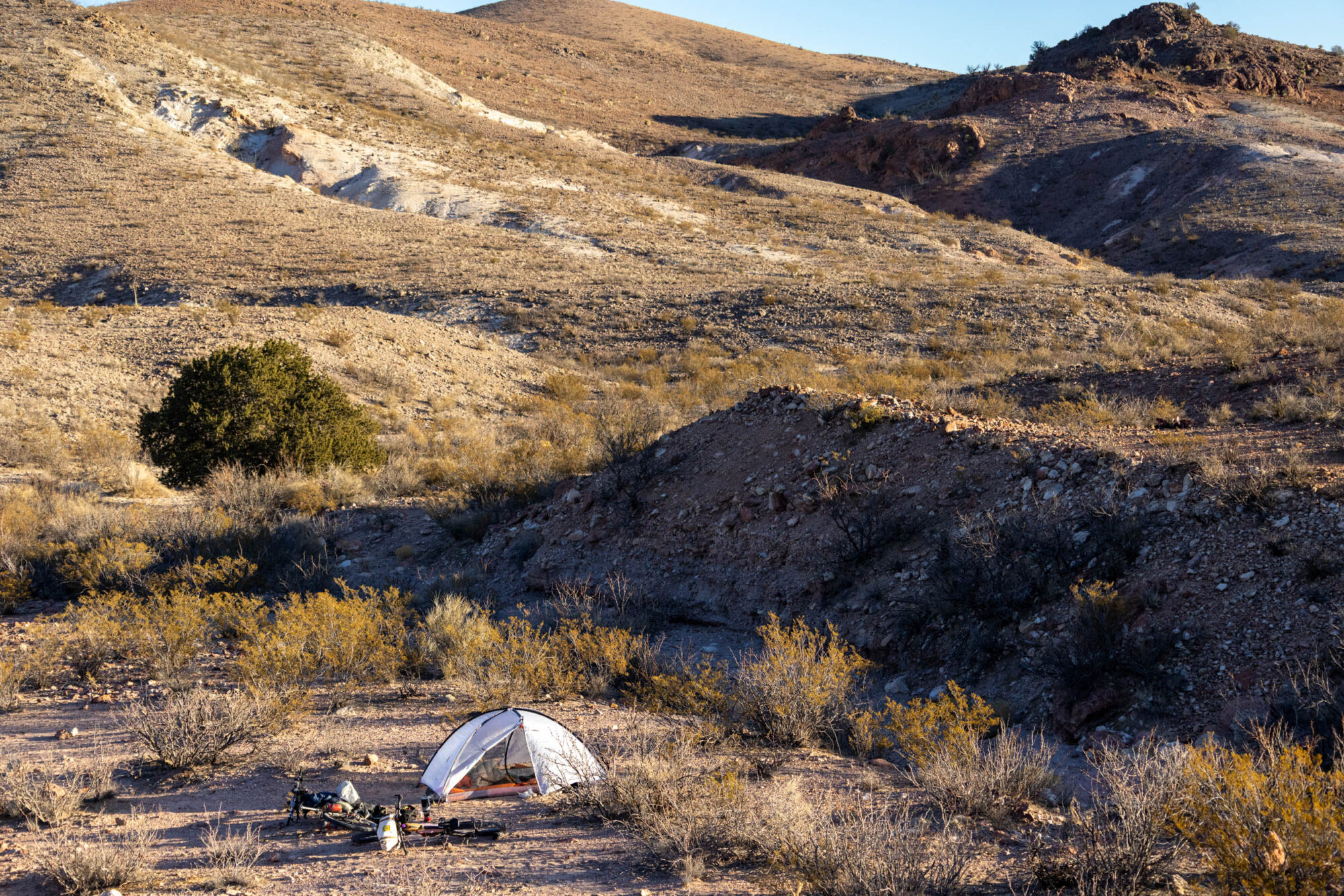
For set up, it’s a matter of sliding the two poles through the sleeves, creating the X-shape structure. I found it works best to work the pole through the sleeve by pulling the tent along the pole, not the other way around. With the poles in place, the pole ends can be inserted into the corresponding corner grommets. The horizontal cross pole secures in place using the same process. There are two ladder lock buckles and webbing loops on the head end of the tent that can be tightened to create more tension through the shelter, and a single additional buckle for the cross pole to tighten the roof.
The CrossPeak doesn’t require any stakes, but the vestibules and doorways are best used with stakes, and I found using stakes at each corner also helps create the best possible pitch. At each doorway, there are line-loc buckles and reflective cords that can be used to help keep the door taught and adjust the amount of ventilation/coverage on each side of the tent.
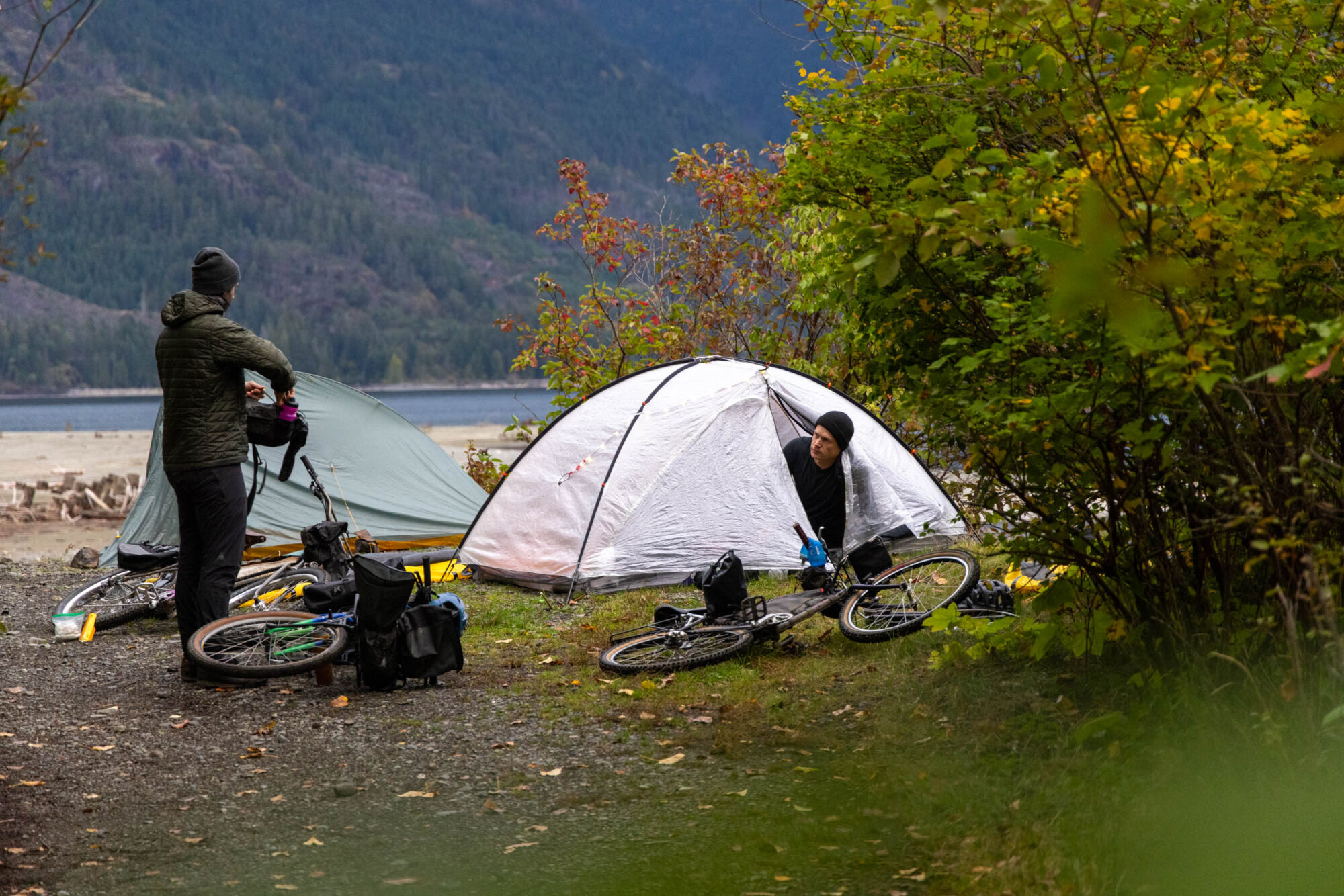
Taking down the tent is more or less the opposite of setup. Remove the stakes, loosen all webbing and guy lines, remove the cross peak pole, and then remove the main poles from their grommets. Removing the main poles from the sleeves is probably the most awkward step, especially for anyone who hasn’t used a sleeve-style tent in a while, but Hyperlite shared a little trick with me that made it a cinch. The best method is folding the entire tent in half so both poles are side by side and then pushing the poles through the sleeves while holding the tent. It’s important to push the poles through, rather than pull, to avoid the pole segments separating inside the sleeves.
As mentioned earlier, Hyperlite recommends rolling the CrossPeak 2 for storage rather than stuffing it. The burrito method works well for this. With the tent laid out on the ground, I normally fold in the two ends slightly, fold in the sides, fold it in lengthwise, and then roll it up. This method hides the slightly less durable fly fabric inside the burrito, leaving the more durable bathtub floor fabric outside. The stuff sack sent with my tent felt too roomy with the tight rolled up as small as possible, but I still used it for some added protection. I tried a few different methods of packing the tent but found it worked best inside a large top-opening handlebar bag or rolled short/fat and stuffed inside a small pannier. With some finesse, you can also slide it into a handlebar roll or rack bag, and stuff other gear (extra layers, camp pillows, etc.) around it, but I found it was harder to achieve a nice tight bag this way.

The poles split into 15.5″ (~40cm) segments, which Hyperlite claims works well for both bikepacking and backpacking, although they aren’t as short as the super short 12.25” (31cm) MSR Hubba Hubba Bikepack tent poles or the 14.5″ (37cm) poles that come with the Nemo Dragonfly Bikepack tent, both of which I reviewed. I would have loved to see 13 to 14″ poles to make fitting them inside a frame bag or on a handlebar roll slightly easier. The tent itself can easily be rolled up tightly into a 4″ x 16″ (10 x 40.5cm) sausage or fatter/shorter if desired, which is smaller than the two previously mentioned tents and not far off from the non-freestanding Durston X-Mid Pro 2 I tested two years ago. Of course, achieving a small pack size requires laying out the tent and rolling it up before packing it away, so in wet or muddy conditions, things can get a little nasty. Having the stuff sack on hand to separate the dirty tent from my other gear was handy on a few rainy mornings.
Humidity, Sand, Wind, and Rain
The Hyperlite CrossPeak 2 has been our go-to tent for every bikepacking trip this fall, winter, and into spring. We’ve used it extensively in humid shoulder season conditions here in the Pacific Northwest and during a week-long bikepacking trip on the Monumental Loop in New Mexico. That trip dished up some seriously windy evenings, and I was impressed by the CrossPeak’s ability to hold up to it. With just the standard stake-out points at each corner and the two doors, it felt solid and totally storm-worthy. The consensus is that sleeve-style tents like the CrossPeak result in a tighter structure and distribute wind stress more evenly across the tent, and this rang true on more than a few windy, exposed nights in the desert. In seriously windy conditions, I’d recommend facing the head or foot-end of the tent toward the wind, not the sides, as the doorway creates a sail-like shape that doesn’t do as well with direct gusts.
We camped in the sand most nights, and I half expected to wake up to a sand-filled tent, but the 4″ (10cm) bathtub floor did an excellent job at keeping the elements out. The small struts in each corner of the tent also helped provide even tension throughout the floor and walls, which meant less time messing around to find the perfect pitch.

With no rain in the forecast, we kept both doors partially open at night to improve airflow and never had any issues with condensation build-up. In humid conditions, including some recent spring campouts on British Columbia’s coast, I pack a small camp towel to wipe out the inside of the tent. Many factors can help reduce condensation on the inside of a tent, including the location where you pitch it, the gear you bring inside, and how much care you give to ventilation. From what I’ve experienced, single-walled DCF tents are some of the most challenging tents to use in cold or humid conditions. There are two minimal semi-structured peak vents over each door and mesh ventilation built into the entire perimeter of the tent, but unless the doors are kept open at night, waking up to a wet ceiling was a regular occurrence.
The two seven-ish square foot vestibules felt roomy enough for any gear we wanted to keep nearby at night without adding too much to the footprint. I think its size hits a sweet spot that allows for enough living space inside the tent for two people while still being easy to pitch in awkward spots or sneak in between prickly bushes. It’s not the roomiest tent, but it felt suitable for a two-week trip, and we were able to cram in four adults for a post-bedtime hangout on a particularly windy night on the Monumental Loop.
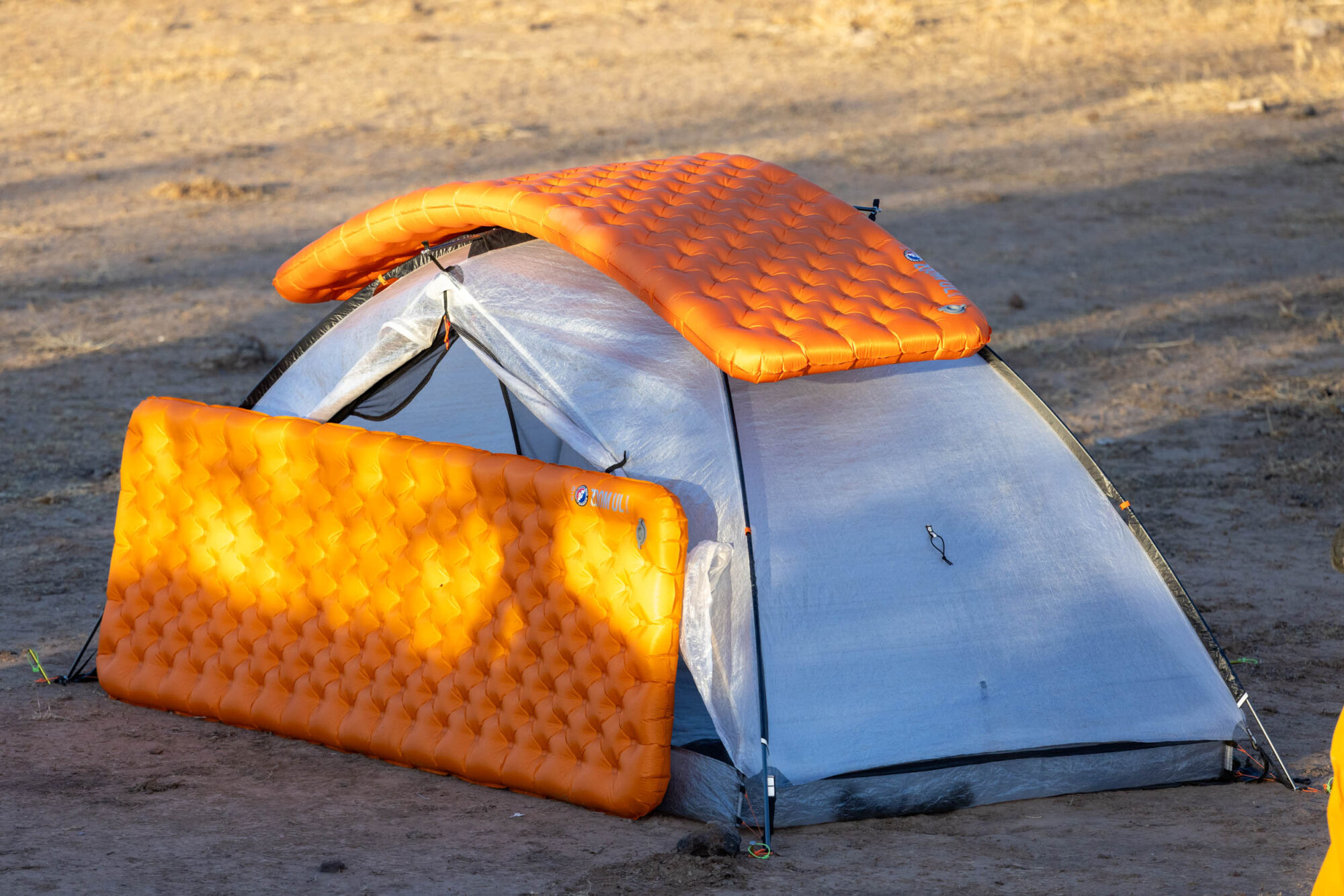
If there’s one thing both Emily and I missed from our time using the feature-packed MSR Hubba Hubba Bikepack Tent, it is the lack of interior pockets and clotheslines that come standard on the MSR. The two tiny mesh pockets on the Hyperlite are fine for small items or a phone, but Emily was nervous to put her glasses in there for fear of crushing them in the night. Having an additional raised pocket at the foot-end of the tent would be a really nice update, and thankfully, there are two interior webbing loops where a clothesline could be added on the inside, which I’ll be doing before our next outing. A few other features I appreciated were the reflective bits that signified the head-end of the tent, the magnetic door toggles, and the pre-installed loops for additional guylines at both ends of the tent.
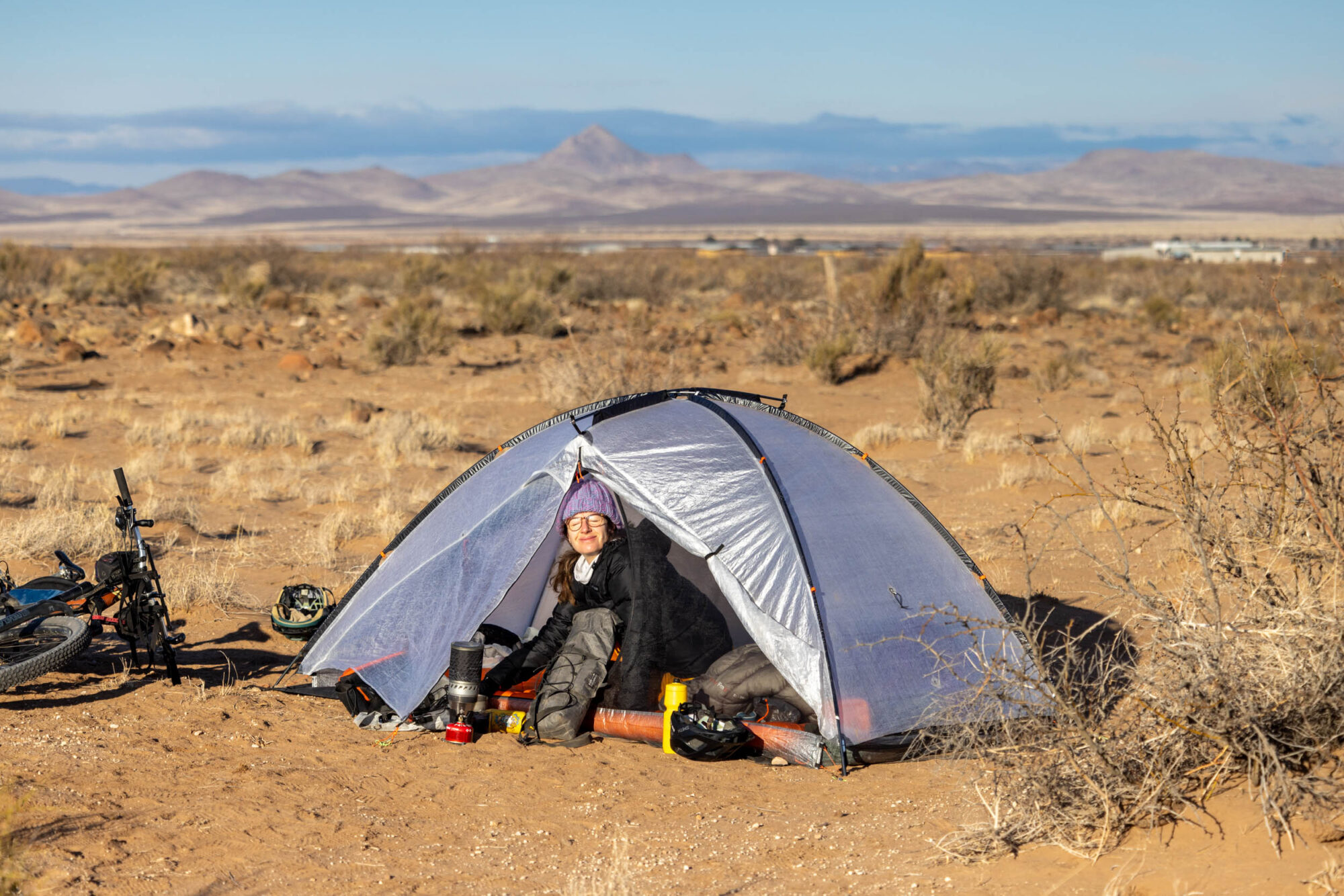
Pros
- Super lightweight for a true freestanding tent
- Extremely packable but requires the space, time, and commitment to roll it up neatly
- Perfectly tensioned every time thanks to pole sleeves and simple tightening system
- Only requires a small footprint
- Quick to take down (after some practice)
- Rock-solid in high winds and rain
Cons
- Single-walled DCF tents struggle with moisture build-up
- Since DCF doesn’t like to be stuffed, pack size isn’t as small or functional as it could be
- Two small interior pockets might not be enough for some folks
- Shorter pole segments could make this design the ultimate bikepacking tent
- $950 isn’t cheap, and is likely out of reach for many, but it’s comparably priced to similar tents
- Capacity: Two-Person
- Material: DCF5/DCF10 Dyneema, 20-denier Sil-Nylon
- Weight: 996 grams (2.2 pounds) for tent body/poles
- Place of Manufacture: Mexico
- Price: $950 USD (body, poles, stuff sacks)
- Manufacturer’s Details: HyperliteMountainGear.com
Wrap Up
Choosing camping gear comes down to personal preference, but most of us would agree that having bikepacking gear that’s lightweight and durable is important. Packability might outweigh the need for the lightest possible tent or sleeping bag, and I’m generally on team packable, which is why I have mixed feelings about Dyneema Composite tents. Not being able to stuff my tent into a handlebar roll or dry bag has forced me to rethink how I pack my gear. Still, the tear and tensile strength of Dyneema are unmatched by silnylon or silpoly fabrics, and from what I’ve experienced, Dyneema is impressively durable. Having a tent that doesn’t wet out is also a major pro for anyone regularly camping in humid or rainy conditions.
The Hyperlite CrossPeak 2 tent is close to being my perfect two-person bikepacking tent. The pole sleeves help create a tight, repeatable pitch that is ready to take on any weather you’ll encounter, including heavy rain and strong winds. The inside is roomy enough for our double-wide sleeping pad without creating a large footprint that’s awkward to pitch, and the various tensioning buckles and door magnets make it functional and fuss-free, which is precisely why I like freestanding tents so much. I’d love to see an updated version with a large pocket at the foot end of the tent, and maybe Hyperlite’s product designers could try to improve the airflow, but otherwise, the CrossPeak 2 checks nearly every box I can think of. I’m secretly hoping I don’t have to test another two-person tent this summer because, as of now, I’d reach for the CrossPeak every time.
Pre-orders for the CrossPeak 2 open today, and they are expected to start shipping early May. Learn more or pre-orders yours at HyperliteMountainGear.com.
Further Reading
Make sure to dig into these related articles for more info...
Please keep the conversation civil, constructive, and inclusive, or your comment will be removed.
